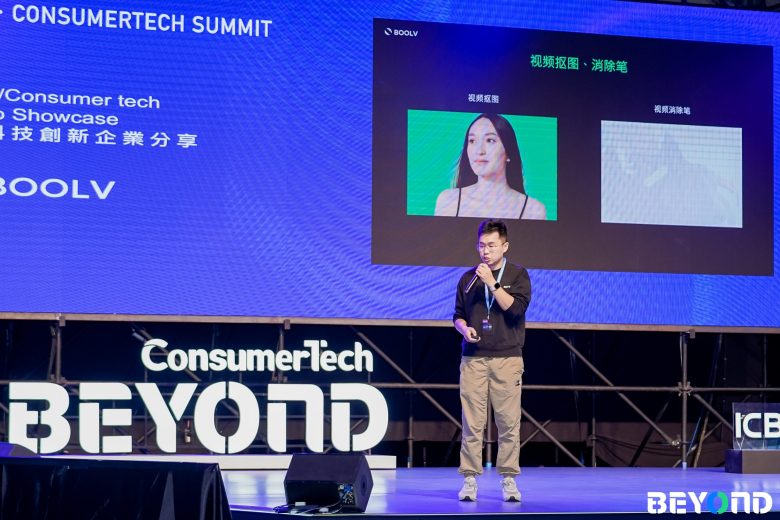Using AI tools in content creation is increasingly an industry norm as the AI models behind the tools become more sophisticated. TechNode caught up with Ken Wang, founder and CEO of BOOLV, at the BEYOND Expo 2023 in mid-May. BOOLV is a Hong Kong-based SaaS startup that makes AI-powered tools to speed up content creation in marketing, catered to overseas e-commerce.
BOOLV, founded by Wang in 2021, serves new and growing e-commerce brands and platforms such as baby clothing retailer Patpat, fast fashion platform Cider, and clothing site Cozinen. Wang and his core team of technicians have previously worked at Tesla, Royal Bank of England, and ByteDance, and are adept in data handling, AI, and product management.
BOOLV has two key offerings: Video Maker, an AI tool that helps retailers make marketing clips, and Booltool, a marketing content platform that offers creation tools for copies, pictures, and videos.

Key quotes: “In the future, the majority of commercial videos will likely be generated using machine assistance (AI). Video will become the most common form of content consumption, but the accompanying challenge will be high video production costs. That’s why it is crucial to have a productivity tool to address this issue. Our company aims to assist global small and medium-sized enterprises in generating high-value videos in the most efficient manner possible.”
Below is a selected Q&A from the interview, which was conducted in Chinese, translated, condensed, and edited for clarity:
What is your company’s biggest competitive advantage?
Our understanding of short videos for e-commerce. The way we handle video clips in our product, such as video matting and background removal, is based on our own AI models. It has nothing to do with general large models.
We also help brands generate unique videos to get the best return on investment. For example, we have analyzed many video scripts to determine what tone suits specific advertising objectives and provided those suggestions as functions. We consider various factors, including transition effects and AI-generated content, such as virtual characters, to achieve the desired impact. We have developed countless scripts and some of the best-performing video formats in the market.
These offerings are not purely technical; it’s more about deconstructing videos and refining best practices for specific purposes. By sharing this knowledge with global users, we create value. This is the core of our competitiveness.
BOOLV’s products are focused on the e-commerce sector. Are you concerned that as large AI models evolve and costs decrease, tools like yours that target specific needs might be overshadowed or replaced by more generalized models?
We don’t worry about that. From a technological standpoint, the results may be similar. However, because we have done specific and targeted data training, our performance is expected to keep improving.
With some of the features, we directly use ChatGPT’s API without much adjustment. But that’s fine because we understand our users’ pain points and needs across e-commerce, and try to find application-oriented solutions. Whether we stack multiple models, use models we trained ourselves, or employ large-scale models, users ultimately care more about the end result.
Our product is all-in-one, and addresses issues throughout users’ workflow (when creating content for e-commerce). While some users could use a generalized model for some tasks, it wouldn’t suit everyone. We also offer competitive pricing for package solutions.
Are you concerned about bigger companies like Adobe and Microsoft incorporating AI into their existing tools? For example, Microsoft is turning its Office suite into Copilot. If major video creation tools like Adobe Premiere incorporated AI functions in the future, would that worry you?
We’re not really concerned about that because these bigger companies cater to a broader range of users, while we are highly focused on specific needs in e-commerce.
For example, Adobe probably wouldn’t invest in face-swapping because it’s not of generalized demand. Face swapping comes into play frequently in certain e-commerce scenarios. Let’s say I need five or six different kinds of models showing the same particular outfit. Or maybe I want to replace one model’s face with that of a person from a different ethnicity. These are highly specific and frequent requirements within the e-commerce field. Users in other sectors may have no use of this.
And even if these larger companies decide to incorporate such features, they probably won’t be as good as what we offer. We have trained and optimized our models specifically for e-commerce, so we are not particularly worried about that aspect.

